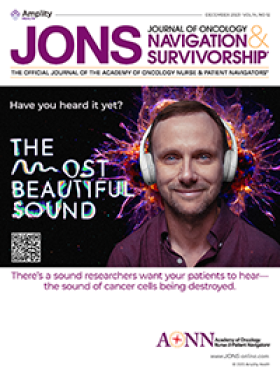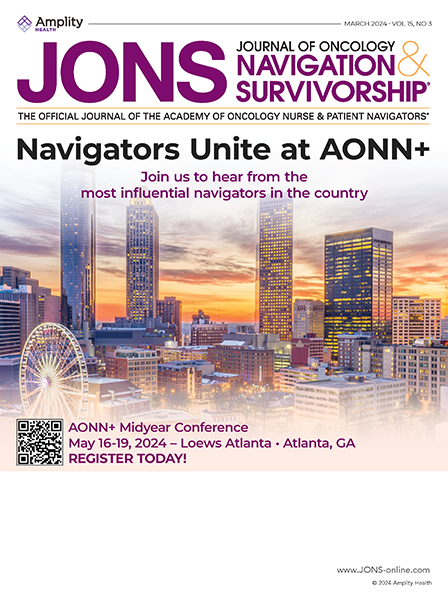Objectives: This study describes the nurse perspective on the importance of biomarker testing for patients with metastatic non–small cell lung cancer (NSCLC) and identifies best practices and process gaps.
Background: Biomarker testing for patients with lung cancer requires multidisciplinary coordination, and nurse navigators and nurse practitioners can help streamline this process.
Methods: An online survey was conducted between March 6 and April 10, 2017, using an e-mail invitation sent to nurses who work in an oncology setting for at least 5 hours per week. All participants (N = 66) had patients with lung cancer under their care. This study had a margin of error of ±12.1%.
Results: The majority (84%) of respondents were comprised of nurse navigators (29%) and nurse practitioners (55%). Nearly all respondents (95%) felt that metastatic nonsquamous NSCLC patients should receive biomarker testing. The majority (73%) reported that biomarker testing is the most effective way to determine the best treatment for the patient, and when patients are eligible, biomarker-driven therapy was reported to be the most effective treatment (73%). Fifty-eight percent of respondents stated their practice’s policy supported reflex testing, whereas 30% conducted biomarker testing only for selected patients. Although very few (3%) said their practice does not generally conduct biomarker testing, not every eligible patient is currently being tested for biomarkers, with an average of 75% of respondents’ patients with metastatic NSCLC reporting to have been tested for biomarkers. Difficulty in obtaining sufficient tissue was reported to be one of the primary reasons respondents (36%) stated their patients do not receive biomarker testing. While the majority believes the various departments at their practices communicate well (52%) or very well (29%) with each other about metastatic NSCLC patient care and practices, specific communication around the need for adequate tissue was reported to be poor in some instances (18%). Some of the primary responsibilities of the respondents during the tissue acquisition process focused on communicating the process to the patient (53%) and to the patient’s family (47%). Furthermore, some respondents (27%) report not being involved at all, and only 35% of respondents report being somewhat involved in communicating the need for adequate tissue.
Conclusions: Biomarker testing is seen as a critical step for patients to receive optimal care. Although challenges to biomarker testing exist, nearly all respondents supported biomarker testing for every metastatic nonsquamous NSCLC patient. While reflex testing of all eligible patients is generally supported in some institutions, many practices still have room to improve their overall communication between HCP specialties and patients. Not all metastatic nonsquamous NSCLC patients receive biomarker testing, in large part due to difficulties in acquiring sufficient tissue. Failure to exchange valuable information, especially across departments or specialties, can be a barrier to patients receiving appropriate biomarker-directed care. Nurse navigators play an important role in educating patients and families about the importance of, and processes for, biomarker testing in metastatic NSCLC.
Disclosure: This research was sponsored by Pfizer, Inc.




